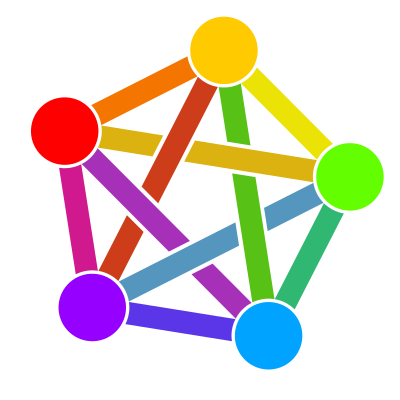

How is it useful? Dessert vs food?
“At the end of the lunch nowadays everyone want to have a dessert, but this is wrong because they should have food”…
The sentence AI vs algorithms sounds pretty much like this


How is it useful? Dessert vs food?
“At the end of the lunch nowadays everyone want to have a dessert, but this is wrong because they should have food”…
The sentence AI vs algorithms sounds pretty much like this


AI is a broad family of statistical and simulation algorithms.
They don’t replace algorithms, they are algorithms very powerful for some cases. For other cases they are less powerful, or overkill and they shouldn’t be used. But there is no dichotomy, as one (AI) is part of the other (algorithms)


It’s not an average machine though. It’s a non-linear predictive system. Averages suck in non-linear predictions


I am talking about “forum-like” websites not static web pages. The article is about fediverse


The problems are bots spamming, or attacking to gather PI. Too much effort. We can’t have nice things anymore


I was one of them. I won’t do it now. Security threats have become so time consuming nowadays to handle.


In the easiest example of a neuron in a artificial neural network, you take an image, you multiply every pixel by some weight, and you apply a very simple non linear transformation at the end. Any transformation is fine, but usually they are pretty trivial. Then you mix and match these neurons to create a neural network. The more complex the task, the more additional operations are added.
In our brain, a neuron binds some neurotransmitters that trigger a electrical signal, this electrical signal is modulated and finally triggers the release of a certain quantity of certain neurotransmitters on the other extreme of the neuron. Detailed, quantitative mechanisms are still not known. These neurons are put together in an extremely complex neural network, details of which are still unknown.
Artificial neural network started as an extremely coarse simulation of real neural networks. Just toy models to explain the concept. Since then, they diverged, evolving in a direction completely unrelated to real neural network, becoming their own thing.


No, what you describe is a basic decision tree. Let’s say the simplest possible ML algorithm, but it is not used as is in practice anywhere. Usually you find “forests” of more complex trees, and they cannot be used for generation, but are very powerful for labeling or regression (eli5 predict some number).
Generative models are based on multiple transformations of images or sentences in extremely complex, nested chains of vector functions, that can extract relevant information (such as concepts, conceptual similarities, and so on).
In practice (eli5), input is transformed in a vector and passed to a complex chain of vector multiplications and simple mathematical transformations until you get an output that in the vast majority of cases is original, i.e. not present in the training data. Non original outputs are possible in case of few “issues” in the training dataset or training process (unless explicitly asked).
In our brain there are no if/else, but electrical signals modulated and transformed, which is conceptually more similar to the generative models than to a decision tree.
In practice however our brain works very differently than generative models


There is not a single if/else in a neural network. You are confusing it with decision trees that are used for classification


“Life is long, I’ll have plenty of time to do it in the future”. Spoiler: life is short


Have you thought asking support from a counselor? It might help to cope


You are most probably wrong. How old are you?
Time really cures such feelings. In 20 years you’ll watch back to these events with a very different perspective
This meme works also for speaking French and Spanish, you simply need to invert it
Ntfs is a notoriously bad file system. If he has the physical space (which he has), better to use a better file system. Ext4 might be “old” but it’s a much better FS. Backup space is overblown imho
256 GB for OS only is huge for linux.
50 gb should be enough, unless you have very peculiar needs. You save 200gb SSD for demanding games that require fast I/O
1TB for backup is pretty big as well. Do you really need to mirror 1:1 your games’ folders? Can you not backup only save files?
Windows, I cannot judge. I don’t use it outside work


This is likely going to change as software support for gaming on Linux improves.
If you consider real high performance computing, with well optimized libraries that can properly use the hardware (including GPUs), 50 % difference between windows and Linux is not really surprising. This is the reason 100% of real high performance computing is done on Linux. It is a better OS for raw performances than windows. For some tasks we are easily talking over twice the performances. It is not always the case, but not surprising at all.
The differences clearly depend on the actual low level implementation of the code. But in general the current situation in gaming, with windows that competes with Linux on raw performances, is only due to lack of software support for gaming on Linux. As this is changing over time, we’ll see games performances greatly improve in Linux. Hopefully until the physiological surpass of windows performances.
Currently most of gaming support on Linux is done via some kind of translation layer, that has itself an overhead. It means that the real linux performance would be even better than in all these benchmarks, if it was really possible to compare 1:1 Windows and Linux with native, well optimized code.
That’s borderline criminal. Nothing more to add
As far as I understand, these are posix requirements https://pubs.opengroup.org/onlinepubs/9699919799/utilities/V3_chap02.html#tag_18
Powershell is not compliant with that document even now in the interactive part. Wsl2 is, as one can istall a standard Linux shell
Thanks, this explains:
The Windows NT POSIX subsystem did not provide the interactive user environment parts
So the interactive part, the shell itself, is not compliant. That is why I was confused
Because he was ceo of a company in a critical position to define the future of economy. Currently the tech field is the biggest and most influential of all economic fields. And by tech here we talk about digital world. There’s absolutely no comparable sector at the moment for importance, not even pharma.
It literally defines the modern economy. In the field, openai is an incredibly important company for future relative success and power of big tech companies.
This is why it is so important for world economy